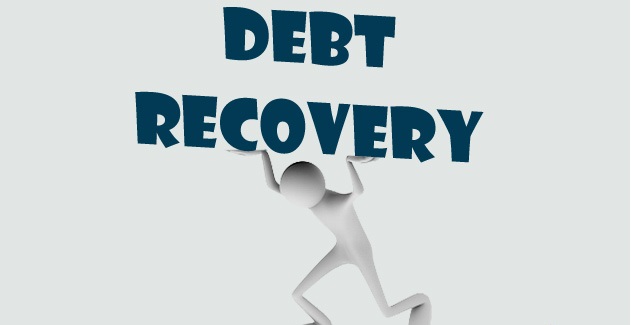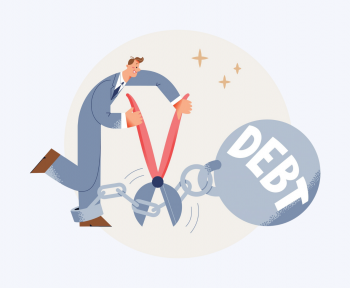Strategies for Debt Recovery
Each and every individual working in any sector wants to earn money and the companies that lend money(loan) to such individuals for various purposes are no different. In order to make money/gain profit, it is imperative for lending companies to formulate prudent and well-considered strategies as to how the Bad Debt Recovery Services ought to take place for maximum/full Debt Collection Services from their customers. As one of the main sources of income for these financial institutions/ companies is from the interest and other charges levied upon the amount lent to a customer. A careful and well-planned debt collection services strategy will save time and will help in cost reduction as well as maximizing resources. The company could always opt for legal action as a last resort against the defaulters although it is an expensive and time-consuming process, therefore, the lending company must come up with such strategies that will result in maximum Debt Recovery Services. The strategies that are required to be focussed on are:
Details of Customer
Each and every detail which will help to remain in contact with the customer must be kept, stored and updated in the system database of the respective money lending company. In some cases, the company may even procure/ask for details of a relative or a friend of the customer. The company needs to ensure this because in case the customer decides to move away without informing, the company will have a way to reach out to such customers.
Reminder of Payment; Automated and telephonically both:
This is a digital phase and most of the money lending companies own an application that makes it easier for the customer to remain up to date with the date of payment among other necessary things. But it is not necessary that a customer will always know how to use the application, therefore, the company must send an automated reminder of payment via any mode (email/text message) which is most likely to reach the customer. The reminder must not just be limited to automated reminders rather telephonic reminders are of paramount importance as well, as customers may or may not check their text messages from time to time.
Follow up Call after Reminder:
A follow-up call after a reminder is a must in case the customer has not paid up their respective dues. When a follow-up call is made the customer must be informed/reminded politely regarding the consequences of not paying the owed amount on or before the expiry prescribed date of payment.
Keep Track of Customer’s Payment Behaviour:
The company needs to remain up to date with the customer’s payment pattern and filter out the delinquent customer. Delinquent customers are the habitual defaulters and are required to be dealt with accordingly and such customers may need a little more attention to ensure the recovery.
Prioritisation of Collection:
It is important to focus on those customers that need attention before all others. For instance, customers that have kept payment on hold, have a long list of broken promises, have large outstanding amounts etc.. Moreover, it is essential for a lending company to have a cent per cent recovery, however that may not be the case always. Therefore the lenders must prioritize such customers whose loan amount is on the higher side because higher the loan amount higher interest amount will be received from the customer. Subsequently, the same may help in balancing the profit and loss margin.
Dedicated Collection Team(code of conduct):
Most of the times these lending companies outsource a team for the purpose of collection of debt who are more capable and experienced in the field of collection of debt as the collection is their daily job. In addition, since a company is required to look over various fields which is quite a hassle as it is strenuous for lending companies to know everything about every field they are overlooking. Therefore, in order to avoid such hassle, lending companies appoint collection companies to make their work easy and hassle-free. Furthermore, since the main purpose of the collection company is the recovery of debt it is more likely that the collection company remains updated with the latest amendments made legally or otherwise. Although the lending companies must be cautious and beware of such collection companies that go beyond the scope of code of conduct of collection companies to recover the debt. The collection company must follow the prescribed code of conduct for collection of debt to the utmost sincerity.
Customised Dashboard:
It is more efficient to procure data from one source instead of collecting data from various sources. Therefore it is recommended to appoint a tech-driven company for debt collections as such a company could customise dashboard as per the requirements of the lending company so that each time an agent calls a customer for recovery, then he/she does not have to look for contact details, history and other information from various other sources. The customised dashboard will give all the necessary information and details of the customer in only a few moments. The agent can even add the gist of the conversation for every customer he/she contacted.
Debt Recovery Tools
There are two kinds of tools that fulfill the purpose of recovery of debt:
- In-Court Tool
- Outside Court Tool
In-Court Tool
The loan agreement between the lender and the borrower incorporates the events of default made by the borrower. The general events of default arise: when the borrower fails to make the full payment of the instalment; when the borrower fails to make payment of any part of the instalment or when the borrower fails to comply with any of the clauses of the payment. These events are generally incorporated in a loan agreement.
These events may also include the times when the payment made by the borrower fails because the cheques get dishonoured or the online transactions fail. These events make the borrower liable as these are punishable offences in the eyes of law. The dishonour of the cheques is covered under the Section 138 of Negotiable Instrument Act, 1881(hereafter referred as NI Act) and the electronic fund transfer is covered under Section 25 of the Payments and Settlements System Act 2007 (hereafter referred as PASS Act).
In any of the abovementioned case, the first step is to send a notice to the borrower wherein the borrower is asked to make the payment within the fifteen days from the date of the notice is received by the borrower. If the borrower fails to make the payment within the stipulated time, then the lender can file a case against the borrower under Section 138 of NI Act or Section 25 of PASS Act, as the case may be.
The punishment under Section 138 of the NI Act is the imprisonment for two years and the fine amounting twice the amount of the cheque, and under Section 25 of the PASS Act, the fine is twice the amount of the electronic fund transfer and the imprisonment extending to two years.
The debt can be recovered through the court proceedings also. Although it might take time and resources, this is one of the ways to recover debts as the borrowers generally make the payment after receiving the notice because nobody wants to get themselves involved in the court proceeding.
Outside Court Tool:
Arbitration:
Every loan agreement between the lender and the borrower has a clause in which the mode to resolve the disputes is mentioned. This clause is generally called an arbitration clause. Such a clause is incorporated in the agreement to ensure that the future disputes between the parties will be resolved through arbitration. Arbitration is a mode to settle disputes outside the courts. This proceeding saves money, time and resources of the parties. In this clause, the parties also mention the events when a dispute can arise between the parties (as mentioned earlier).
This clause allows the parties to move to arbitration for debt recovery. It is one of the ways through which the debt could be recovered in less time and with minimum use of resources. The arbitration is a procedure which involves the dispute resolution with the help of the third person who is not a party to the dispute.
Mediation:
Another mode of debt recovery is mediation. It is also a mode of alternative dispute resolution system where the parties resolve the dispute outside the courts with the help of an unbiased third party. Mediation helps parties reach a settlement through mutual consent. Mediation involves the parties to put up their arguments in front of the mediator and then in a session or two, they are able to reach a settlement agreement.
These two modes of alternative dispute resolutions are the most efficient tools for debt recovery as they not only save time but also money. These modes are confidential in nature and therefore the goodwill of the parties are also not harmed. These proceedings are the preferred proceedings because these are interest-based proceedings which mean that the parties’ interest is the basis of the proceeding. The arbitration and mediation offer a settlement that helps and benefits both the parties.
The purpose of this article is explained in two folds, firstly regarding the strategies a lending company must take into consideration for recovery of debt and secondly tools such companies use for recovery of debt from its customers. A company must consider and implement well-thought and goal-oriented strategies which will help in full recovery of debt lent to the customers. Although the company must also ensure that the strategies which are being used do not have any loopholes which may backfire at a later stage. Debt recovery is a major issue for the financial institutions and the tools and techniques used by them needs to be properly strategised. The abovementioned tools and techniques are convenient ways to recover debts.
Article by:
Aishwarya Tiwari & Saumya Johari
Legal Consultants





